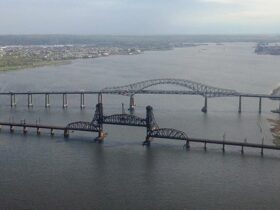Kuerig, the pioneer in coffee pods and coffee machines, has leveraged an A.I. – fueled strategy during the pandemic in combination with recently acquired Green Mountain and soda maker Dr Pepper Snapple Group.
Keurig Dr Pepper (KDP) was formed two years ago by the $18.7 billion merger of Kuerig Green Mountain and Dr Pepper Snapple Group.
The carbonated soft drinks market has long been dominated by Coca-Cola and Pepsi who share about 75% of the market.
While little-known Keurig Dr Pepper is less than half the size of Coke and Pepsi in the U.S. soft drinks market, it is now competing with the two giants for a share of the thirsty stay-at-home American marketplace caused by the pandemic. In the first half of this year KDP has gotten 34% of the $1.4 billion increase in revenue for all U.S. carbonated soft drinks according to research firms that follow the market.
This has boosted KDP’s overall market share from 22.7% to 24%. Their total revenue last year was $11.1 billion, which makes them the seventh-largest food and beverage company in America.
Their strategy was based upon studying Starbuck’s where half of their drinks have ice in them. The obvious conclusion is that when someone needs a boost in the afternoon they may chose coffee, a carbonated soda or an energy drink. Historically, the hot and cold beverage markets were looked upon as two different market segments. KDP realized that these segments were merging and they saw this as a strategic advantage, which it has become.
The proof of this is that for the first half of 2020 their revenues rose 3% to $5.5 billion and profits increased nearly 12% to $5.5 billion. While during the same period, Coke’s income dropped 15.4% and Pepsi’s earnings were down 6%.
Simultaneously, KDP developed an artificial intelligence platform connected to their data centers that monitored every Kuerig-cup pod sold to identify the brand and flavor using visual recognition
technology to instantly identify and change in the daily cups families were drinking and the blends they prefer. This minute-by-minute intelligence indicated that people were leaving the cities and sheltering in place at home, and that coffee consumption was exploding.
Likewise, soft drink consumption was growing at a similar growth rate. All this data is being transmitted minute-by-minute of what’s selling and how fast to KDP’s data centers.
In effect, the company’s Keurig brewers are like the bargain “razor’ sold near a break-even to lure customers to the more profitable “blades” – KDP’s K-Cup pods. KDP produces 10 billion-plus pods a year. This equates to an amazing 82% of the total market.
KDP buys and grinds the coffee, fills the pods, and distributes to stores for the brands it owns, as well as for many others that it has licenses for.
KDP now controls 82% of the total coffee pod market. They have also had a 34% increase in the overall carbonated soft drink sales that they have captured.
KDP is a classic example of the effectiveness of the combination marketing and artificial intelligence in the midst of a national health crisis.













